Even the traditional breakfast in Japan is a feast for the eyes. It is presented in many small bowls and on small plates. Miso soup is always part of it. Ichi-ju-san-sai means one soup and three dishes. At least. Most of the time it is much more. It has nothing at all to do with the sugary day starters from Europe. As a traveler, the traditional start to the day is most certainly offered in a ryokan.
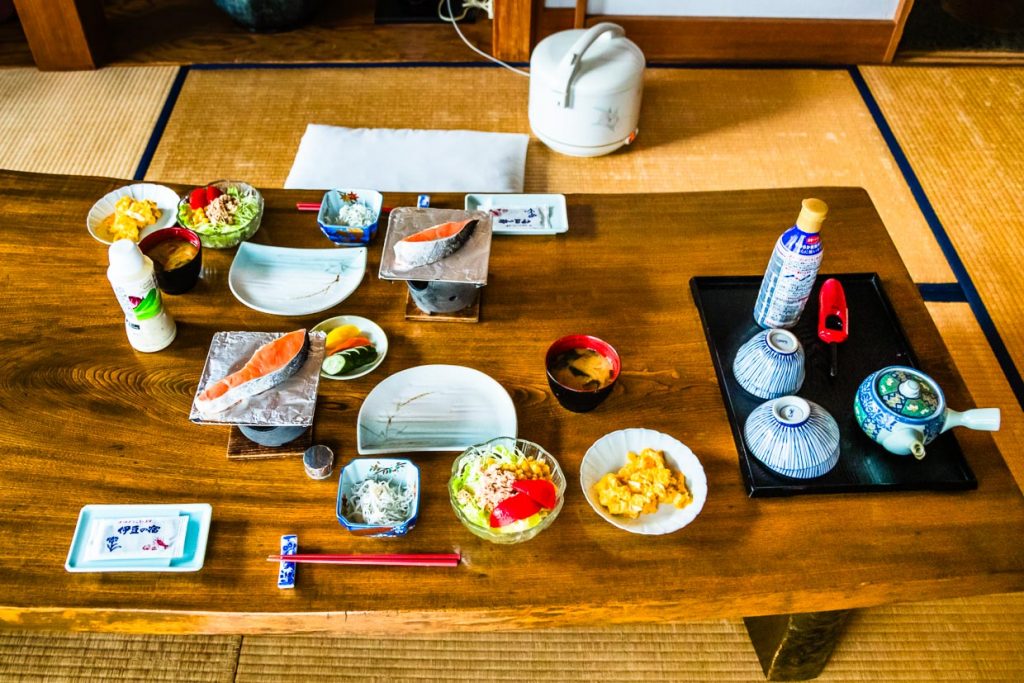
The small privately run inns offer not only the rich breakfast, but also the appropriate ambience. The food is served at low tables, people sit on cushions in a simple room covered with tatami mats, and the rice stove is ready in the corner of the room before the innkeeper starts setting up the small portions and the table fireplace.
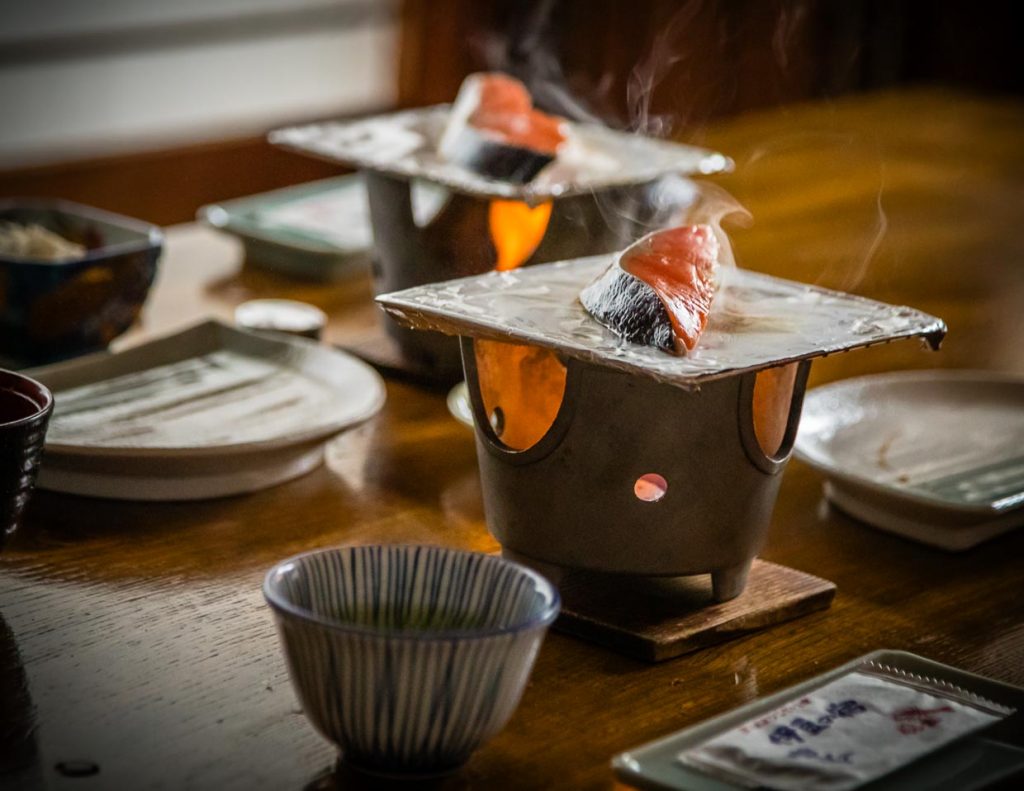
Hara Hachi Bu – Eating in moderation made difficult!
Fill your stomach only 80 percent or in other words: stop eating when you feel full. This rule should perhaps be taken home from a trip to Japan and then applied in everyday life. When traveling through the culinary wonderland of Japan, this kind of moderation is difficult. After all, you want to try everything and because it usually tastes so good, eat it up.
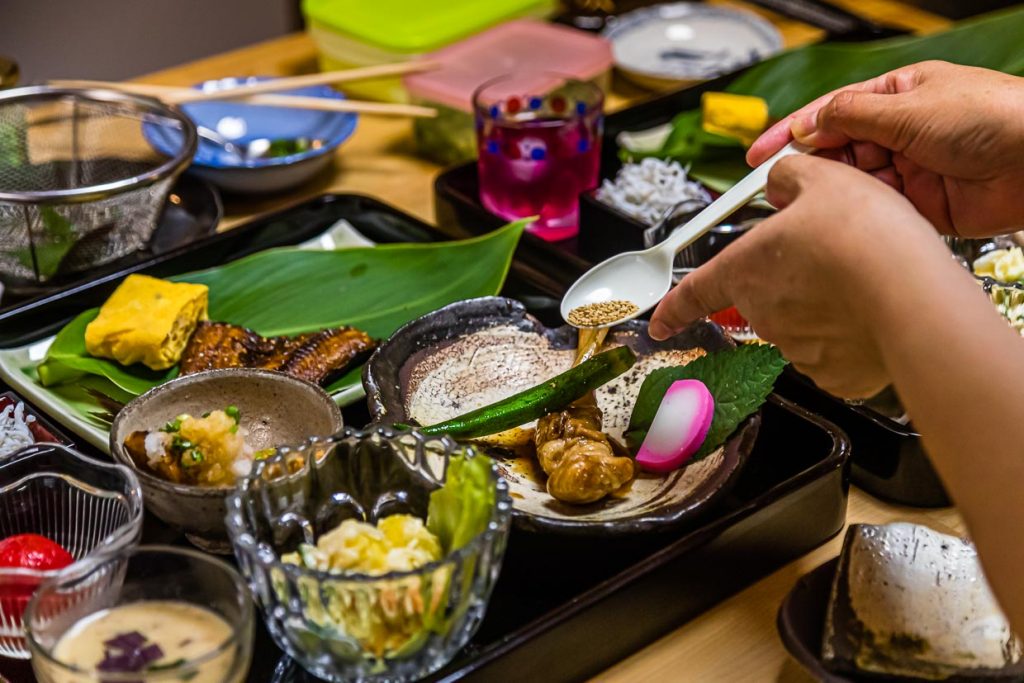
In Japan, breakfast is considered the foundation for a long and healthy life. Tofu, fish, rice and tsukemono, sour pickled vegetables, take center stage. At the Ryokan Izu-Makiba on the Izu Peninsula in Shizuoka Prefecture, I am served the best miso soup of our trip so far. It tastes so good that I ask Mrs. Iyama, with the help of a translation program, to show me how to prepare it the next morning.
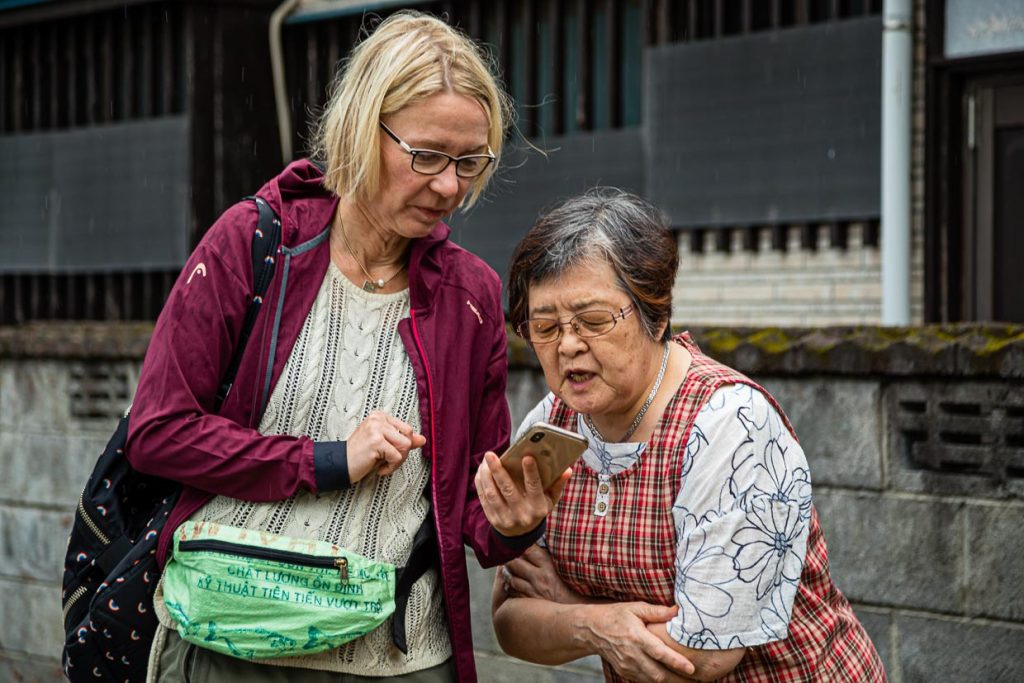
Misoshiru – the happiness of a warm soup
Miso soup tastes different from region to region. Its taste depends crucially on the miso used. The soup is served in a bowl with a lid to hold the aroma as long as possible. A miso soup is made up of three components, all of which contribute to the special depth of flavor. The first step is to prepare a dashi broth from the kombualge and dried bonito flakes, called katsuobushi. Then miso is added, and just before serving, ingredients such as scallions or silken tofu are added. Miso soup should not boil, otherwise the taste and texture of the soup will suffer.
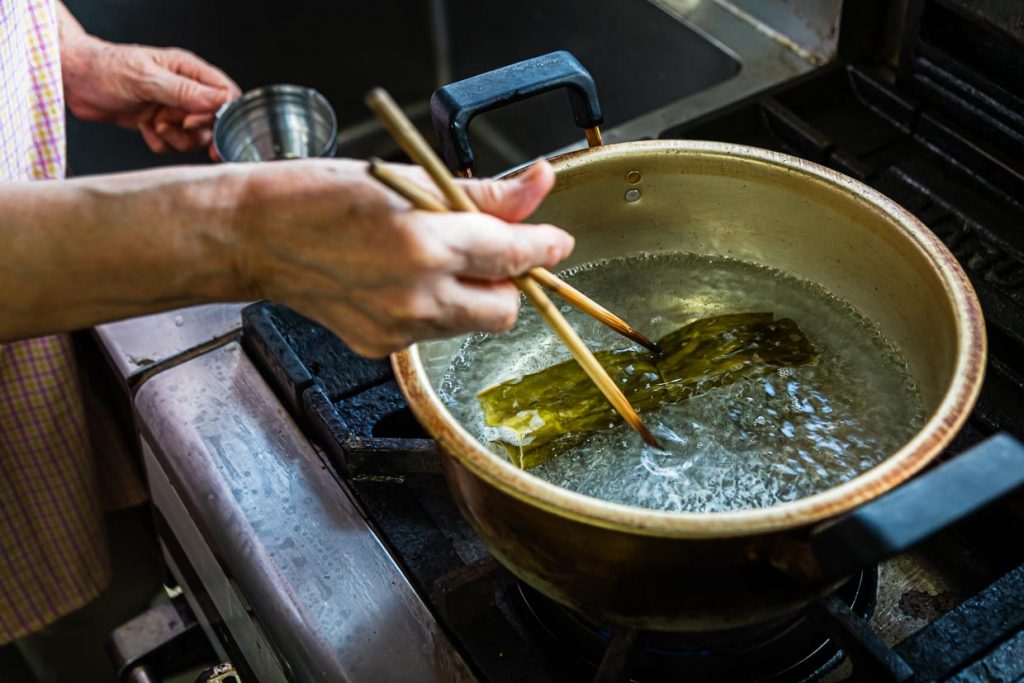
Miso – The source of flavor
Dashi is the basis of miso soup. There are several ways to make dashi broth. Cold soaking the kombu seaweed requires a little more preparation time. A quicker way is to steep the seaweed in hot water and then add katsuobushi, the shavings of a fermented tuna. For vegetarians, soaked dried shitake mushrooms are used instead of bonito flakes.
At Ryokan Izu Makiba, Ms. Iyama uses the quick version. Water is boiled and the kombualge soaks in the hot water for a few minutes. Then it is removed again. The alga can be allowed to dry again and used a second time. The first extract is called Ichiban Dashi, the second Niban Dashi.
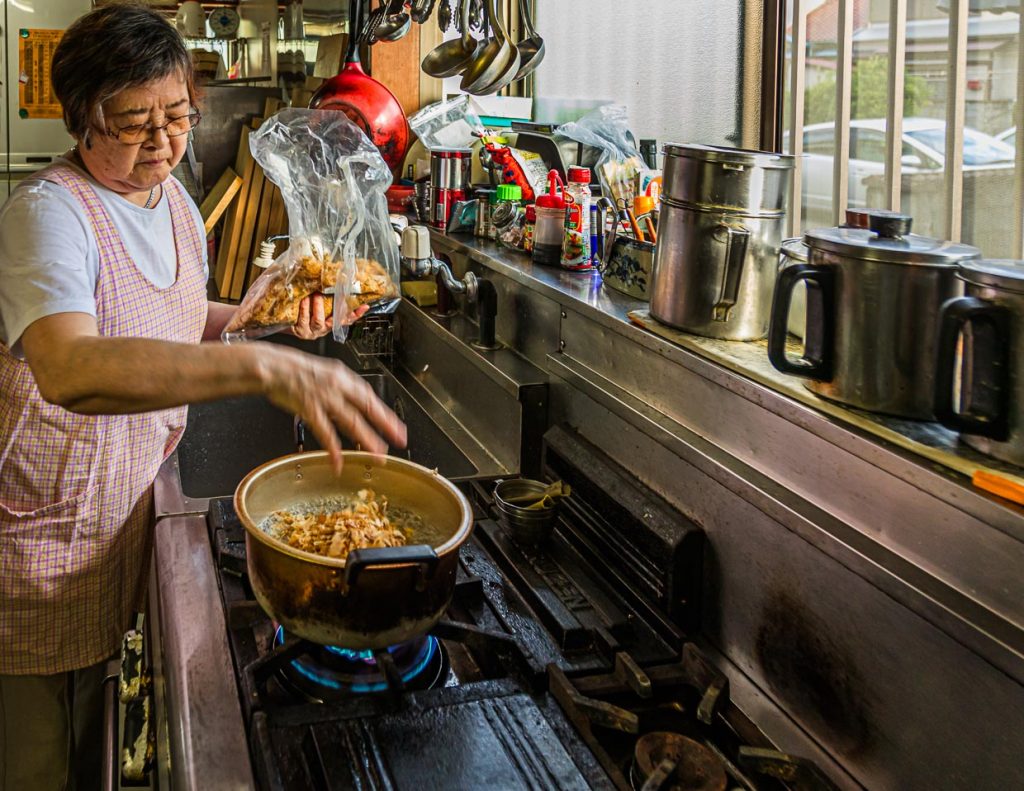
Next, Ms. Iyama adds bonito flakes, called katsuobushi, for further umami flavor. A large hand of the finely flaked delicacy sinks into the hot water. The water should be about 80 degrees. Let the bonito flakes steep for a good 5 minutes. Then pour the contents of the pot through a sieve and return to the pot.
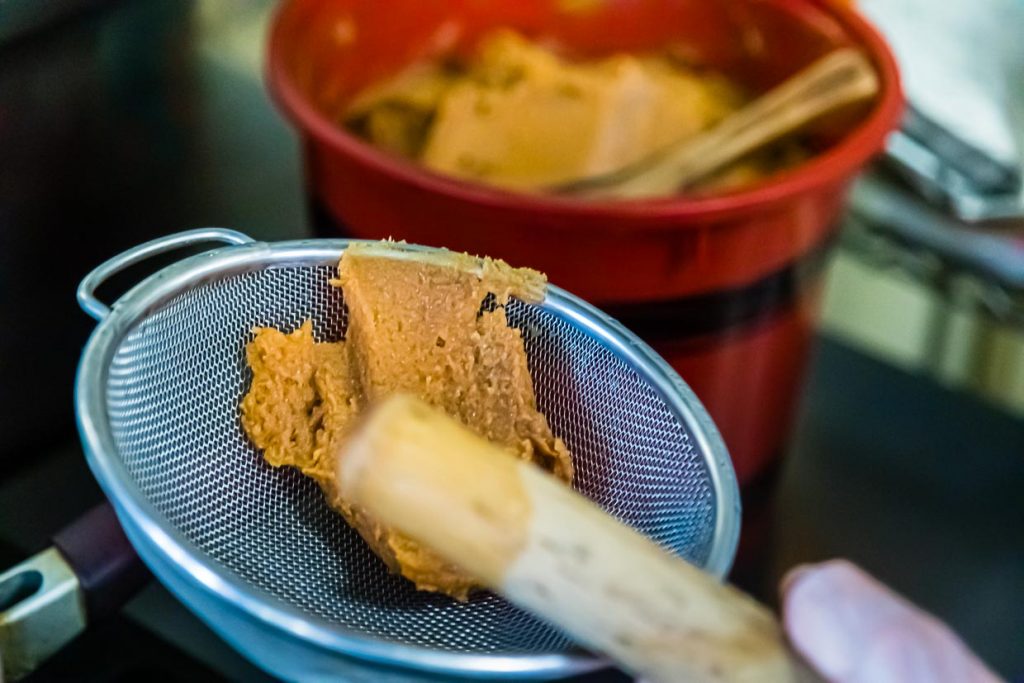
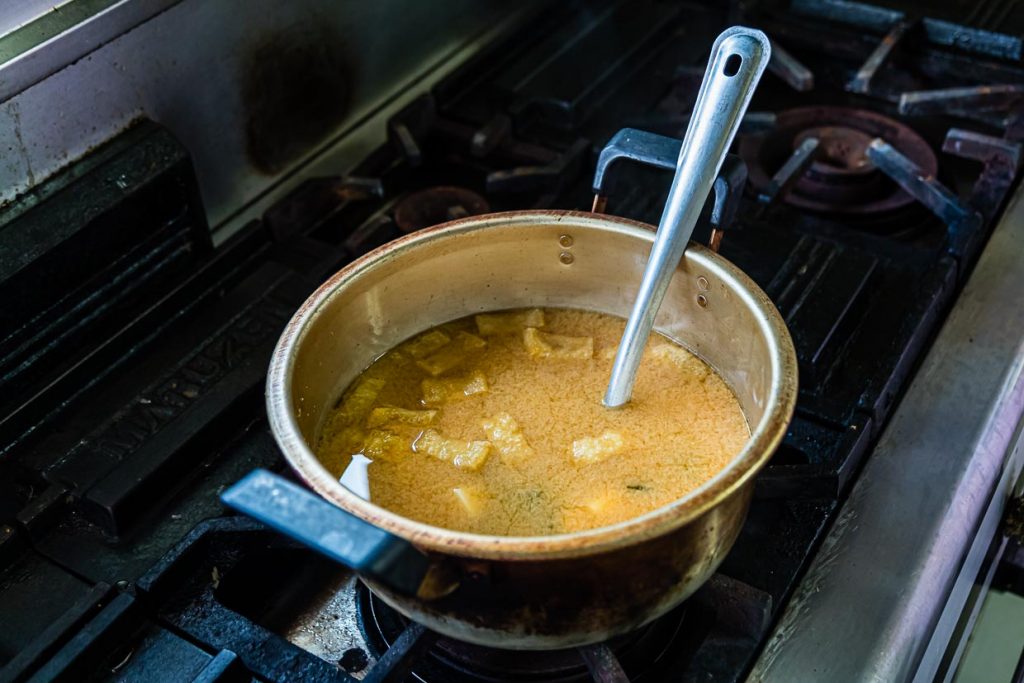
Miso soup is so important in Japanese cuisine that making it every day is synonymous with spending your whole life together. Really heartwarming! In addition, miso soup is healthy, rich in protein and filling. Tofu is usually used as an ingredient, as well as spring onion or small strips of vegetables.
Ryokan Izu Makiba
This ryokan is a lucky chance discovery on our trip through Shizuoka Prefecture. While looking for a place to stay, we came across the traditional inn. Restaurants and ryokans are often only recognizable by a cloth curtain in front of the entrance. At Izu Makiba, Hiroto Iyama cooks opulent fish menus. His mother takes care of breakfast. The house even has its own onsen, a natural hot spring. As a farewell gift, we receive a Japanese wind chime and good wishes. As always, the translation program produces funny phrases. One of the funniest translations by the program was Hiroto’s question about whether we also eat meat. “Do you eat creatures?”
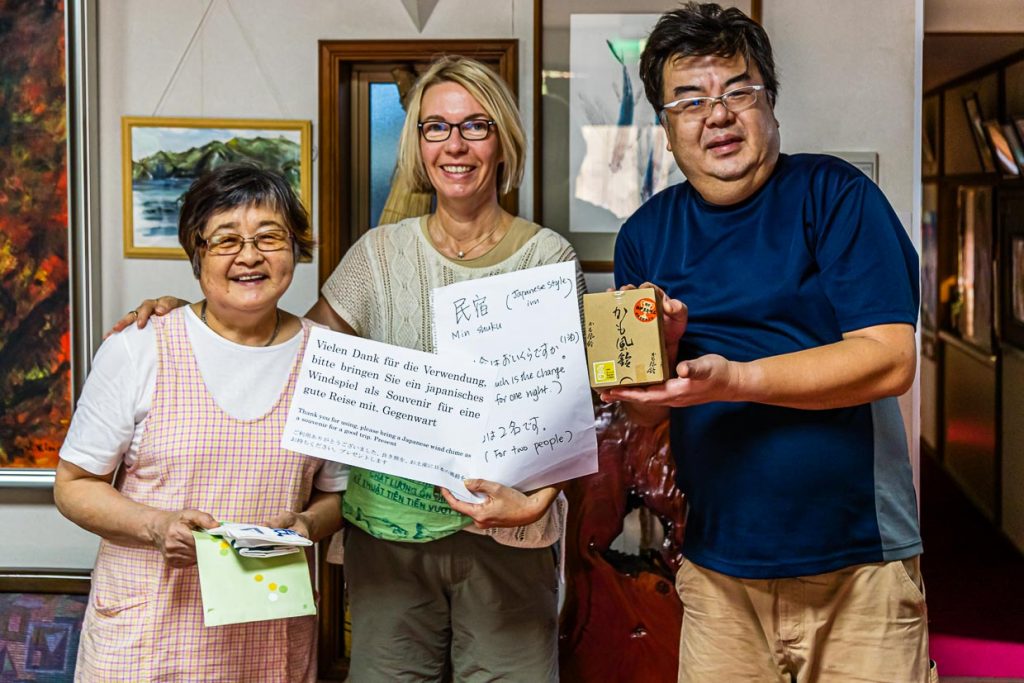
Only a few kilometers away from Ryokan Izu Makiba is the family business of Yasuhisa Seriwaza. Here, the fifth generation is using the oldest method of fish preservation and producing excellent katsuobushi. We were lucky enough to witness the beginning of production on the way from tuna to rock-hard delicacy. Visiting Mr Slow Food Mount Fuji – The production of bonito flakes.
The stay in the prefecture was supported in part by the Shizuoka Tourism Association

